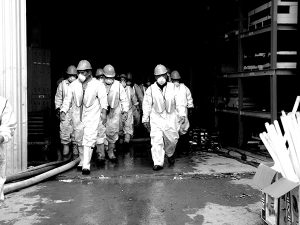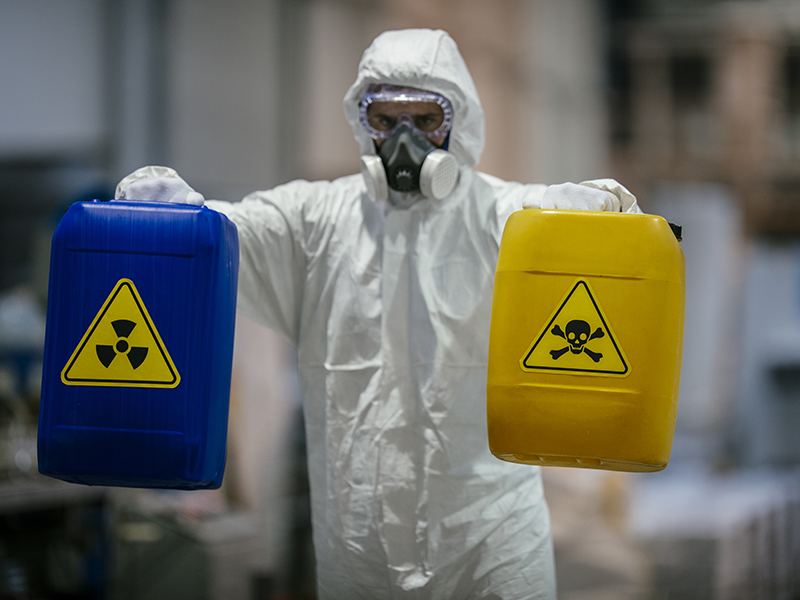Specialist Blood Cleanup: Guaranteeing Safe and Thorough Decontamination
Specialist Blood Cleanup: Guaranteeing Safe and Thorough Decontamination
Blog Article
Specialist Biohazard Cleansing and Decontamination for Blood, Bodily Fluids, and Hazardous Materials
The prospective health dangers connected with exposure to biohazards underscore the critical demand for meticulous handling and extensive cleanup. As we navigate the complex landscape of biohazard cleanup, understanding the subtleties of laws, conformity, and the specific equipment at play comes to be vital in making certain a comprehensive and safe decontamination process.
Health And Wellness Dangers of Biohazard Direct Exposure
Direct exposure to biohazards positions significant health dangers that can cause serious repercussions for people and areas alike. Biohazards encompass a variety of organic materials, including blood, physical liquids, mold and mildew, microorganisms, infections, and various other possibly transmittable materials. When people enter contact with these biohazards, whether through mishaps, improper handling, or ecological exposure, they deal with the risk of contracting severe ailments or diseases.
Among the main health threats connected with biohazard direct exposure is the transmission of contagious illness. Bloodborne virus such as HIV, liver disease B and C, and numerous microorganisms can be existing in biohazardous products, presenting a direct hazard to human health. Breathing in air-borne biohazards like mold spores or coming right into call with infected surface areas can also cause respiratory problems, allergies, and other adverse wellness effects.
In addition, biohazard exposure can have long-lasting health implications, with some conditions materializing years after the preliminary contact (Blood Cleanup). Therefore, it is crucial to prioritize appropriate biohazard cleansing and decontamination to mitigate these wellness dangers and guarantee the safety and security of individuals and areas

Specialized Educating for Biohazard Cleaning
When it involves managing biohazard cleaning efficiently and safely, specialized training plays a basic role in making certain proper decontamination treatments are complied with. Biohazard cleaning needs specific understanding and abilities to properly mitigate risks connected with bloodborne virus, bodily fluids, and dangerous materials. Experts learnt biohazard clean-up go through strenuous instruction on exactly how to securely deal with, get rid of, and take care of biohazardous products to avoid contamination and direct exposure.
Specialized training for biohazard cleaning covers a series of vital subjects, consisting of appropriate personal protective tools (PPE) usage, bloodborne virus understanding, decontamination strategies, and contaminated materials disposal methods. People learnt biohazard cleanup are furnished with the essential competence to evaluate contamination degrees, recognize prospective dangers, and carry out proper clean-up procedures in compliance with regulative criteria.
Continuous training and education and learning are extremely important in the area of biohazard cleaning to remain upgraded on the most recent purification innovations, safety and security procedures, and policies. By investing in specialized training, biohazard cleanup professionals can properly react to emergency situation clean-up situations and protect both public health and the atmosphere.
Relevance of Correct Purification Methods
Making use of proper purification methods is critical in biohazard cleanup to properly remove harmful materials and minimize wellness dangers. Reliable decontamination not only makes sure the elimination of noticeable traces of blood, physical fluids, and various other biohazards yet also targets unseen pathogens that might position significant health and wellness dangers otherwise appropriately eradicated. By following rigorous decontamination protocols, educated specialists can significantly minimize the threat of direct exposure to dangerous microbes, infections, and microorganisms that might lead to diseases or infections.
Proper purification methods entail making use of specific tools and disinfectants that are particularly designed to reduce the effects of biohazards effectively. Detailed cleansing and sanitation of infected areas are crucial to avoid the spread of pathogens and guarantee a safe environment for owners. Additionally, the appropriate disposal of biohazardous waste adhering to purification procedures is crucial in stopping contamination of other surfaces or individuals.

Tools and Devices for Safe Cleaning
When dealing with blood, physical fluids, or hazardous products, biohazard cleansing specialists depend on specialized gear to lessen exposure dangers and extensively sanitize the afflicted location. Additionally, biohazard cleansing kits having disinfectants, absorbing materials, and biohazard bags are used to securely get rid of see this website and consist of of polluted products.
Advanced cleaning tools like hospital-grade anti-bacterials, HEPA-filtered vacuums, and fogging equipments are used to sanitize surface areas and remove biohazards effectively. Specialized devices such as sharps containers and biohazard garbage disposal containers are used to securely take care of sharp items and biohazardous waste materials. By using the ideal equipment and tools, biohazard cleaning professionals can guarantee a comprehensive cleaning procedure that prioritizes security and lessens wellness threats for both employees and owners of the damaged area.
Rules and Compliance in Biohazard Cleaning
Correct adherence to learn the facts here now laws and conformity criteria is extremely important in biohazard cleaning to make certain the safety and security of both personnel and the environment. Federal government agencies such as OSHA (Occupational Safety and Health Administration) and the EPA (Epa) have developed details standards for biohazard cleanup treatments to lessen health risks and environmental contamination. These policies cover a variety of elements including the handling, transportation, and disposal of biohazardous materials, in addition to the necessary training and safety devices required for workers involved in the cleaning process.
Biohazard cleaning firms must remain current with these guidelines to assure that their procedures satisfy the called for safety standards. Failing to follow these laws can lead to severe repercussions, consisting of fines, lawsuit, and jeopardizing the wellness of people and the setting. By following strict regulations and compliance steps, biohazard cleansing companies can efficiently alleviate dangers and ensure a safe and complete clean-up process for all events involved.
Final Thought
Finally, biohazard cleansing and decontamination need specialized training, appropriate methods, and adherence to policies. Direct exposure to blood, bodily liquids, and harmful products presents substantial wellness risks, making it critical to make use of the ideal devices and tools for secure cleanup. By following strict procedures and guidelines, professionals can properly alleviate the dangers connected with biohazard exposure and make sure the safety and security of both themselves and others.
As we navigate the complex landscape of biohazard clean-up, recognizing the nuances of guidelines, conformity, and the customized devices at play becomes important in making sure a safe and complete purification process. (Blood Cleanup)
When it comes to handling biohazard cleaning successfully and safely, specialized training plays a fundamental function in index making sure appropriate decontamination treatments are adhered to.Making use of correct decontamination techniques is important in biohazard cleanup to efficiently reduce and eliminate harmful products health and wellness risks. Furthermore, biohazard cleansing packages consisting of anti-bacterials, absorptive materials, and biohazard bags are used to securely dispose and consist of of polluted things.
Government companies such as OSHA (Occupational Safety and Health And Wellness Management) and the EPA (Environmental Protection Firm) have established particular guidelines for biohazard cleanup procedures to minimize health and wellness risks and environmental contamination.
Report this page